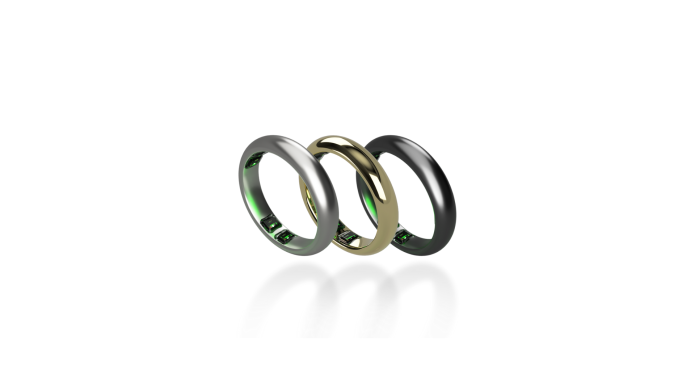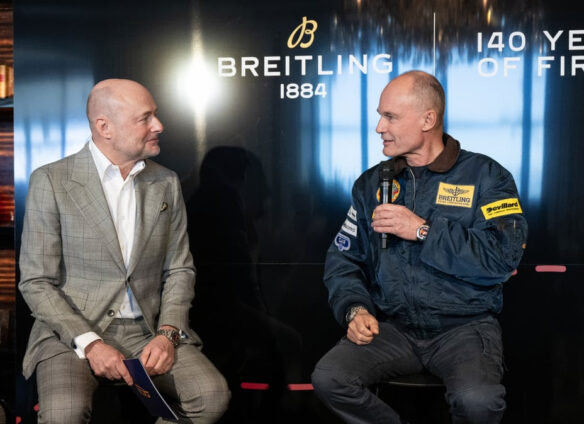Tokyo (SCCIJ) – The Swiss start-up Senbiosys has developed the jewelry-like smart ring Iris that incorporates all the health-monitoring features currently available in smartwatches. Thanks to the world’s smallest sensor, the ring appears to have major market potential. Its recent crowdfunding campaign raised six times more capital than expected.

A seemingly unremarkable ring from the Swiss start-up Senbiosys could soon take our health monitoring to a new level (© Senbiosys).
Breaking all records
Iris isn’t the first health-monitoring smart ring out there, but what sets it apart is its ultra-compact design and low power requirement: The ring can be fully charged in just half an hour. It contains 18 LEDs and six photodetectors, allowing for enhanced accuracy relative to existing products. The data are displayed via a smartphone application.
Many wearable devices today use photoplethysmography (PPG) sensors – placed for example under connected watches and distinguishable by the colored LED light they emit – to measure vital signs like heart rate, blood oxygen levels, breathing rate, and blood pressure. The sensors of the ring measure just four cubic millimeters.
After several years of miniaturization research, engineers at the Swiss Federal Institute of Technology in Lausanne (EPFL) could concentrate all the monitoring capabilities available on smartwatches into a volume of four cubic millimeters, four times smaller than before, breaking all records. This breakthrough backed by several patents also means much less power is required, and so a significantly smaller battery can deliver the same battery life.
These innovations are at the heart of Iris, the smart ring marketed by Senbiosys – a start-up company founded by two former EPFL Ph.D. students in 2018. The company’s crowdfunding campaign to take iris from the prototype stage to large-scale production attracted more than 4,000 people and raised over 620,000 Swiss francs, more than six times the initial target of 100,000 francs.
The world’s smallest sensors
The new sensor quality has made waves across the industry. “Our breakthrough has given rise to around 60 journal articles in the fields of microelectronics and optical sensors,” says Antonino Caizzone, a Senbiosys cofounder who received the 2021 Gilbert Hausmann Award for his thesis in this area. “It’s also led to 11 patents, including some obtained at EPFL, and our work has been cited around 1,000 times.”
Senbiosys’s miniature photodetectors are already used in several electronic devices, such as hearing aids produced by other companies. Today, the photodetectors equip a smart ring measuring 5 mm wide and 2.5 mm thick. “We felt there was potential to use our sensors to create a new product directly for consumers,” says Caizzone. “Several journal articles have shown that taking vital-sign measurements on the wrist isn’t ideal, since data reliability can be impacted by the wrist’s size and shape. Readings taken on the finger or ear are better.”
Text: Cecilia Carron/EPFL News (Editing by SCCIJ)





























